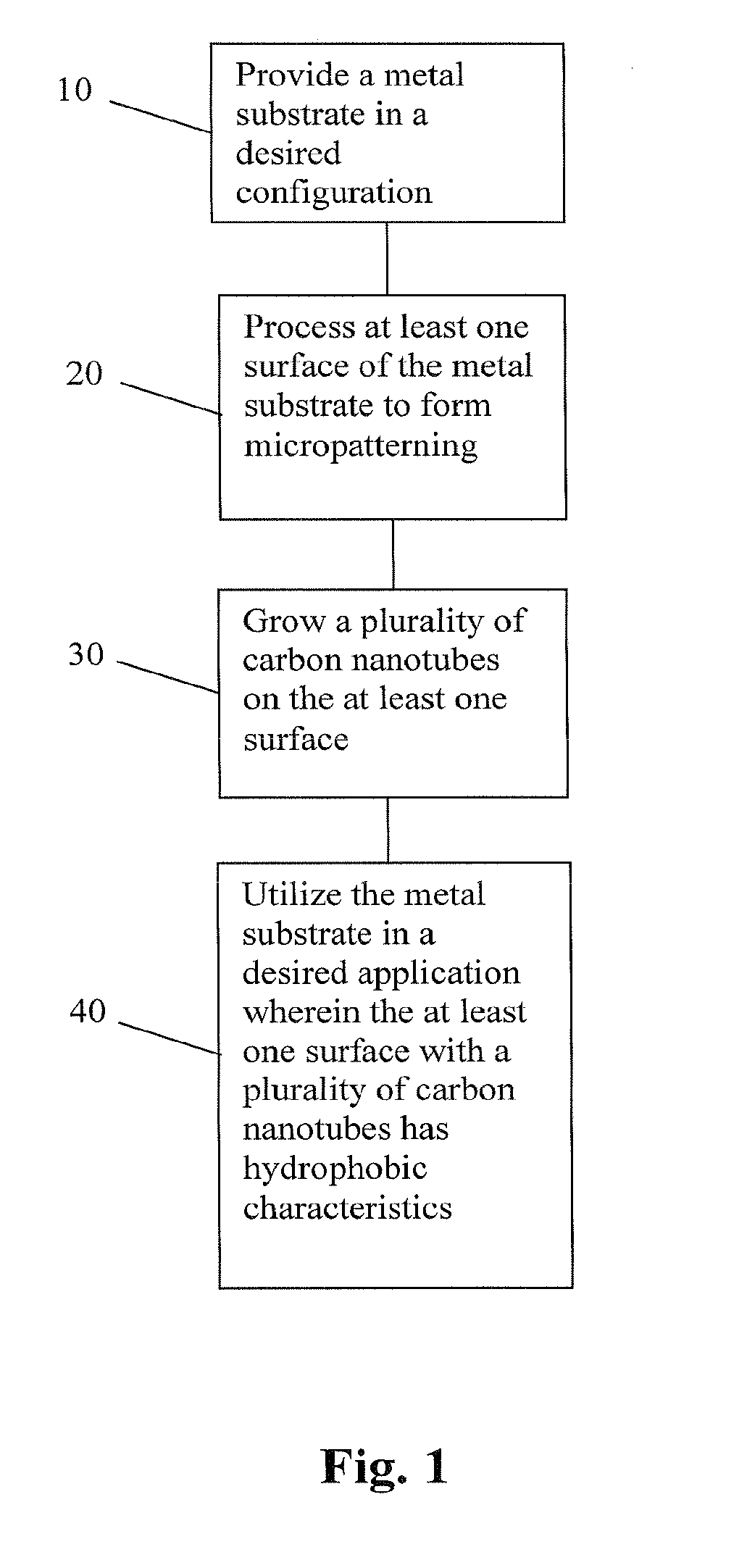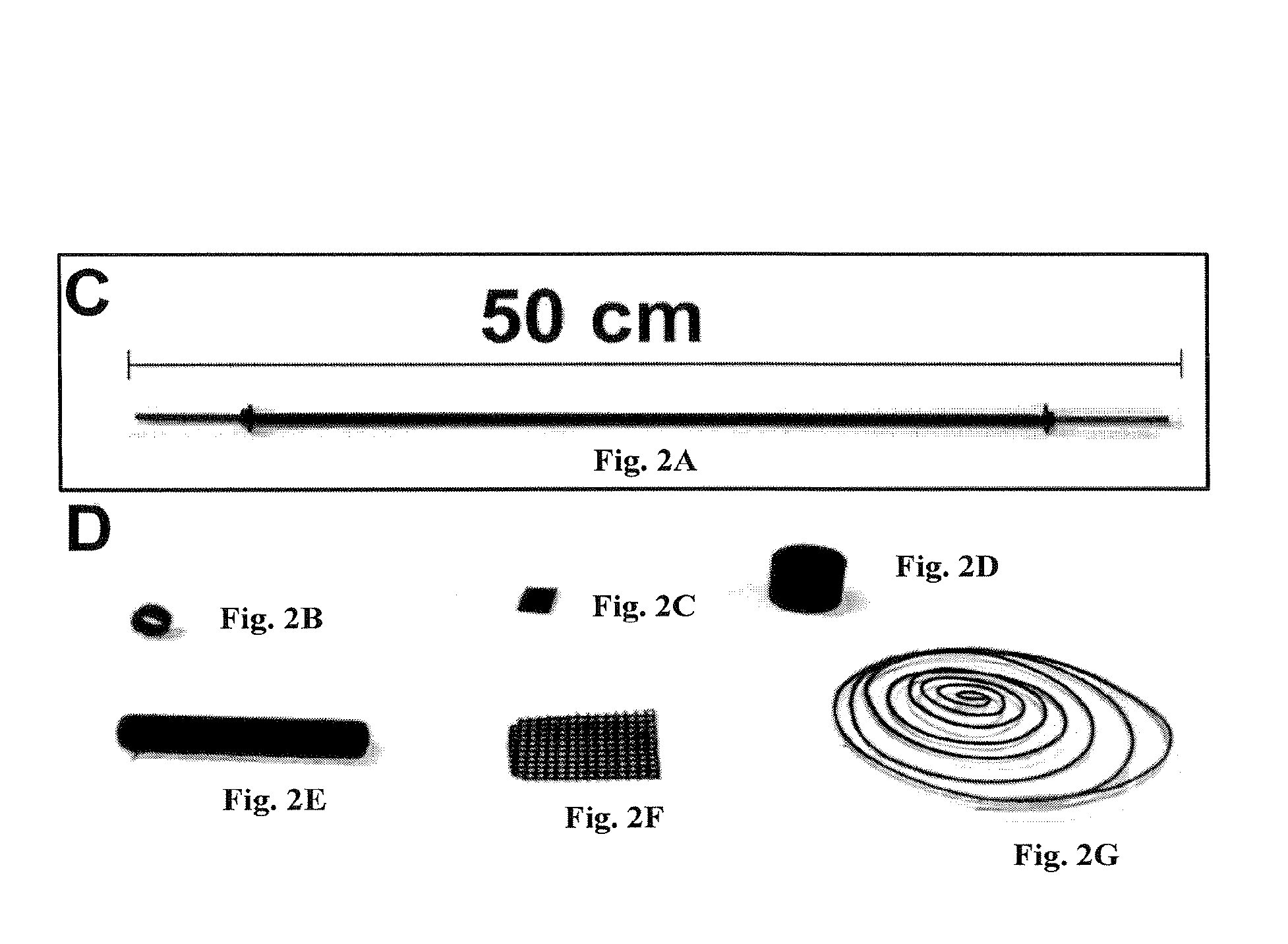Hydrophobic surface coating systems and methods for metals
a technology of hydrophobic surface coating and metals, applied in the direction of film/foil adhesive, weaving, transportation and packaging, etc., can solve the problems of reducing the efficiency affecting the operation performance of aircraft, and degrading the operation performance of heat exchange equipment, so as to reduce maintenance and/or operating costs, increase the surface life of metallic materials, cost-effective and simplified
- Summary
- Abstract
- Description
- Claims
- Application Information
AI Technical Summary
Benefits of technology
Problems solved by technology
Method used
Image
Examples
Embodiment Construction
[0039]In the figures, the same reference numerals may be used to refer to the same or similar components. While the present invention is described primarily with respect to the formation of superhydrophobic materials and surfaces, these materials and surfaces may be adapted and applied in various applications, some of which will be described herein, but it should be understood that other applications are contemplated and within the scope of the invention.
[0040]In the invention, the superhydrophobic materials are formed on metallic surfaces and substrates to provide a substrate system which is used in a variety of applications where a substrate having metallic material physical, structural, electrical, conductive, high or low temperature or other characteristics are desired. Many metals in general have electric and thermal conductivity characteristics, high density and the ability to be deformed under stress without cleaving, that make them useful for various environments and applica...
PUM
| Property | Measurement | Unit |
|---|---|---|
| length | aaaaa | aaaaa |
| contact angles | aaaaa | aaaaa |
| water contact angle | aaaaa | aaaaa |
Abstract
Description
Claims
Application Information
 Login to View More
Login to View More - R&D
- Intellectual Property
- Life Sciences
- Materials
- Tech Scout
- Unparalleled Data Quality
- Higher Quality Content
- 60% Fewer Hallucinations
Browse by: Latest US Patents, China's latest patents, Technical Efficacy Thesaurus, Application Domain, Technology Topic, Popular Technical Reports.
© 2025 PatSnap. All rights reserved.Legal|Privacy policy|Modern Slavery Act Transparency Statement|Sitemap|About US| Contact US: help@patsnap.com



